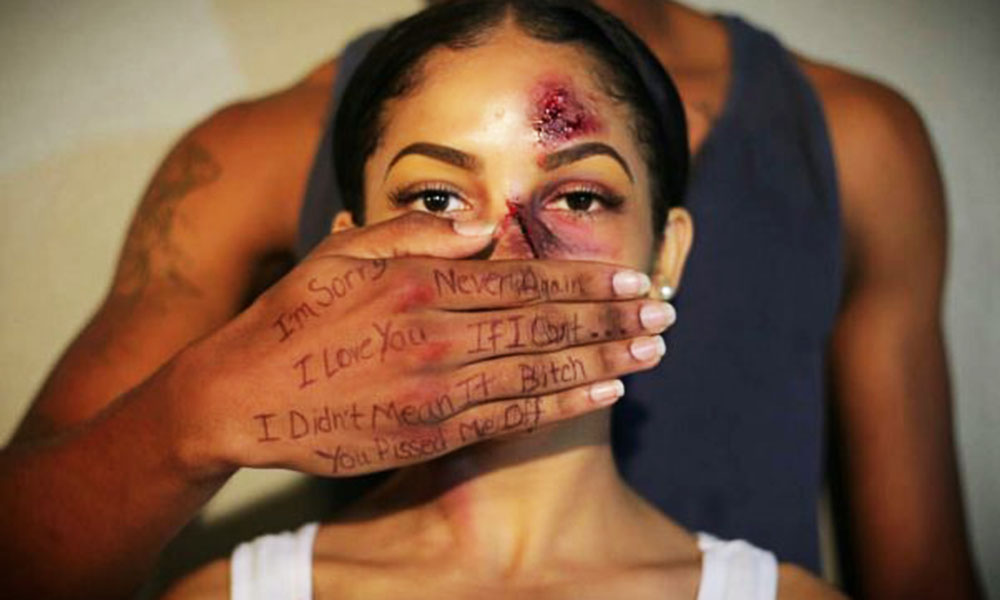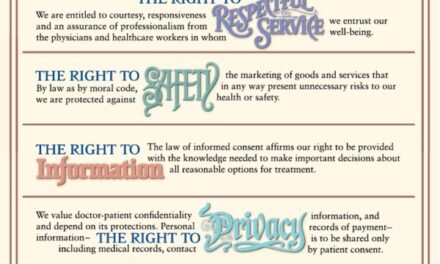terrorism noun
ter-ror-ism |\’ter-er-i-zem\
Definition: the systematic use of terror especially as a means of coercion
Merriam-Webster
1. the use of violence and threats to intimidate or coerce, especially for political purposes.
2. the state of fear and submission produced by terrorism or terrorization.
Dictionary.com
Since Mohamed Atta, Marwan al-Shehhi, Ziad Jarrah and Hani Hanjour flew American Airlines Flights 11 and 77 and United Airlines Flights 175 and 77 into the World Trade Center, the Pentagon and a field in Shanksville, Pennsylvania, the fear of terrorism has been ever present on the collective consciousness of Americans.
It isn’t that terrorism did not exist prior to September 11, 2001. Quite the contrary. We sat back quietly for years and read about attacks by extremist groups, like the IRA, wreaking havoc in the UK. From the comfort and apparent safety of our living rooms, we watched the news and saw the Palestinian-Israeli conflict escalate and become bloodier and bloodier. We watched footage of the bombings that would ravage buses, outdoor cafes and lives in those nations.
And despite the 1993 bombing at the North Tower of the World Trade Center, we really weren’t too worried about terrorists on American soil. We felt safe. We felt immune. Perhaps we even felt invincible.
And then September 11th came.
And every illusion of safety based upon our world superiority was shattered.
“Terrorism” became, not only an everyday word, but an everyday fear.
And it has dictated how we respond to our neighbors nearby and afar. Laws and policies governing how we travel changed, seemingly overnight. Security in airports and government buildings was intensified. And Muslims (or anyone who looked as if they could be Muslim) were now looked upon with the side-eye of suspicion and paranoia.
EVERYTHING CHANGED.
And 17 years later, the idea of terrorism still leaves us with knees that knock in fear.
But let’s look at this for a minute.
Let’s assess this threat, not as a stand-alone danger, but in the context of other real and EVERYDAY dangers.
4 names appear in the preface to this article. You may or may not have remembered who they were, but when it was revealed, you probably immediately connected them to an event that has indelibly impacted America.
Here are 5 additional names that you are also unlikely to recognize. They hold a different significance; but they represent an even greater and more pervasive danger to our society.
Monica Butler Johnson.
Sherilyn Gordon Burroughs.
Aisha Fraser Mason.
Karen Smith.
Tamara O-Neal.
And here are 5 names to add to theirs… names that further define the threat of which I am speaking.
David Johnson
Daniel Burroughs
Lance Mason
Cedric Anderson
Juan Lopez
The women named above were mothers, sisters, friends, a college administrator, teacher and two doctors.
And the 5 men were their killers. Each of them was either a husband, ex-husband or significant other of these women.
And what they all represent is the epidemic of domestic violence.
I have written this essay to challenge the notions that you may hold about political terrorism and how much of a threat it is to you, your neighbor and your fellow countrymen. I thought that you needed to know about a different threat that may live next door to you or in the apartment above yours. I am telling you about a threat that may not affect you directly, but that leads to 5-6 times more death than political terrorism does or ever has. This is about a threat that not only takes lives, but that destroys dignity, trust and self-esteem… one that impacts families, communities and local and national economies… a threat with which you may be familiar, but know very little about.
I am talking to you about all of the ways that domestic violence destroys and all of the people who are affected. I am also here to tell you that this is the danger that we must not ignore. Finally, I am here to share some strategies with you, that if we all carried out one small part, we might save many families and many lives.
FACT: Domestic violence is more of a threat, more of a danger, than extremist terrorism has EVER been.
Let’s start with some basic statistics, so that you understand the magnitude of the problem that we so easily gloss over.
According to the National Consortium for the Study of Terrorism and Responses to Terrorism, from 2003-2014, there were 3,158 fatalities in the United States due to conventional terrorism.
Between 2003 and 2017, 18,000 women were murdered as a result of “… intimate partner violence…” (Huff Post, Dec. 2017)
So, why, given this epidemic, do we not know more about this violence that is visited upon so many women on a daily basis?
Perhaps we speak freely and loudly of extremist terrorism, because with that, we are all unsuspecting victims.
But in the case of “… intimate partner violence…”, as a society, we have some culpability… even if we have never raised a hand to strike a woman. Maybe that is what we are trying to ignore… our societal accountability.
Let’s examine, for a moment, the ways in which we undermine this problem.
The first is that there simply is not enough awareness about the extent of it. As a nation, if we are aware of the depth of the statistics, then why are we not seeing it as an epidemic… as a public health crisis? Why aren’t we calling it that?
Maybe it’s all in the name. How can we see it as something as destructive as it is when we refer to it with delicate euphemisms?
We use terms like “abuse”, “domestic violence” and “intimate partner violence”. These terms, whether we like it or not, downplay and minimize what is truly happening.
Merriam-Webster defines abuse as: “…to use or treat so as to injure or damage…”.
Given the real impact of this sort of violence, Merriam-Webster’s description is pretty benign. This definition mentions nothing of death; nothing of fear; nothing of the demoralization that accompany this “domestic” problem.
Phrases like “domestic violence” and “intimate partner violence” simply fail to assign sufficient gravity to what these things truly are. How can we call behaviors and actions that include: physical violence, rape, stalking and homicide “domestic” or “intimate”? These words romanticize and minimize the threat of which we are speaking.
“Domestic” is “… relating to the running of a home or to family relations…”.
I’m not sure about you and your family, but punching one another in the face is not how we run our home… and I would say that it is not how any home should be run.
“Domestic” implies home and it implies a place of safety, structure, acceptance, predictability and love.
Violence is anything but that. Violence is unsafe. It is erratic and it is anything but loving. It makes the combination of these 2 words oxymoronic.
Why would we ever call it that?
In recent years, we’ve seen the emergence of the term “Intimate Partner Violence”. I find this even more dichotomous. In fact, it’s almost offensive.
Let’s not use words like “intimate” and “partner” to describe violence. These words suggest an element of closeness and trust that cannot co-exist with violence.
So let’s start the process of recognizing the clear and present danger of this particular brand of violence. Let’s call it what it really is, and let’s call offenders what they really are.
Terrorists. They are terrorists. Plain and simple.
When they kill, they aren’t even mere murderers. What makes them terrorists is that long before they kill, they have harassed, tormented, intimidated and repeatedly caused injury to their victims.
They inspire ongoing fear in everyday life for their girlfriends and wives. Their victims live with the understanding that violence can and will erupt at any time, at the hands of their mate.
Unlike people who are afraid of political terrorism, these women face EVERYDAY with the fear of a very well-known assailant. For them, it is not a matter of whether or not violence will occur. Rather, it is a matter of WHEN and how bad it will be.
In addition to constant fear, victims of this type of violence live with a great deal of shame, humiliation and insecurity that rarely ever plague people who are afraid of political terrorists. Further, political terrorism does not undermine one’s sense of self-worth.
And the harm does not end with the victim, herself. It is visited upon the children who live in that home, who all too often are hypervigilant and keenly aware of the most subtle of changes in the assailant parent. They know when the first blow will land long before the attacker has balled up his fists.
These children learn to be ashamed and afraid. They often keep the dirty little secret that ravages their home. They do not share it with friends, teachers or neighbors because through all that occurs in their homes, they learn not to trust… anyone. And their conditioning remains with them into adulthood, where they try to navigate adult relationships without experiencing vulnerability. They learn and perpetuate dysfunction in many of their own relationships.
This violence even impacts entities outside of their homes.
Studies of the impact of domestic violence have taught us that there is even a deleterious effect upon business and commerce. “Domestic Violence Statistics” states that “… domestic violence victims lose nearly 8 million days of paid work per year in the US alone—the equivalent of 32,000 full-time jobs”.
The National Coalition Against Domestic Violence tells us that between 21-60% of victims of intimate partner violence lose their jobs due to reasons stemming from the abuse.
It affects national and local economies in that its cost exceeds $8.3 billion dollars per year. You may have thought that this doesn’t affect you or yours, but chances are good that as you read this, your very own community is under siege.
The point is that, just as political terrorism has tentacles that reach into many segments of society and affects large groups of people, so does the domestic terrorism of which I am writing. In addition to the person on the receiving end of the punches and bites, domestic terrorism affects many other individuals and countless associations and groups of people.
So, what do we do? How do we establish accountability to our mothers, our sisters, our cousins and friends?
Often when we talk about what we can do to help victims of domestic violence, we stress encouraging a woman to come forward and to tell someone. We stress creating a safe atmosphere in which she can do that. We stress helping her to get to refuge, like a shelter, if she discloses her predicament.
And this would all be fine, except that, most victims of this sort of violence will never admit what is going on. Factors like fear, shame and feeling that no solution will work for her, will often keep her silent. She probably also knows that the commonly used “order of protection” will do little to protect her, and may even inflame her abuser more, creating further likelihood of an attack.
Finally, when we place the onus of solving the burden squarely on her shoulders, we also inadvertently, assign her a degree of blame for her circumstances.
The onus for a feasible solution should be placed elsewhere. And that begins with community responsibility and cooperation.
That begins with systems change. This is the only way that dignity can be restored and lives can be saved. We have to treat this like the crisis that it is. We have to act like it matters.
We have to do what we’ve done with the issue of political terrorism, which is to dig deep and to change policy.
First is that, we must face the facts. State the problem.
“Domestic violence kills 5-6 times as many women annually, as does political terrorism.”
“Domestic violence is an epidemic. And up until now, we haven’t treated it as one.”
Now it’s time to find solutions. Consider the following:
Education and awareness are key.
In July 2017, The Atlantic referred to the need for more awareness and universal screening for domestic violence at physicians’ offices.
“To reduce domestic violence, the CDC report recommends better bystander training and screening in doctors’ offices.”
“Gun sense” is critical.
According to The National Coalition Against Domestic Violence,
“The presence of a gun in a domestic violence situation increases the risk of homicide by 500%.”
With this thinking in mind, the following initiatives have been proposed:
“… adopt laws that enhance enforcement of federal legislation and ensure that guns are surrendered by or removed from the presence of abusers. In addition, the study urges the U.S. Congress to adopt stronger legislation to protect victims of domestic violence, such as: the ‘Protecting Domestic Violence and Stalking Victims Act of 2015’ introduced by Sen. Amy Klobuchar (D-MN); the ‘Lori Jackson Domestic Violence Survivor Protection Act’ introduced by Sen. Richard Blumenthal (D-CT); and, the ‘Zero Tolerance for Domestic Abusers Act’ introduced by Reps. Debbie Dingell (D-MI) and Robert Dold (R-IL).”
Violence Policy Center, September 15, 2015
Upon arrest of an individual for domestic violence, gun control should be applied in the following way,
“When a perpetrator has been arrested for domestic violence, we believe their firearms should be taken away,” said Monica McLaughlin, deputy director of Public Policy at the National Network to End Domestic Violence.”
NBC News, April 11, 2017
Demand more from our local police precincts.
“Former Baltimore prosecutor Debbie Hines told NBC News that she thinks
police departments should employ dedicated domestic violence units… They have units for homicide, robbery, and drugs,” said Hines, “And the fact that there’s generally not units for DV speaks to the little regard that officers frequently have for the cases.”
NBC News, April 11, 2017
Finally, abolish these!
“In some cities and towns, laws even punish victims for trying to get help — with ‘nuisance’ citations and evictions used against domestic violence victims who place more than a certain number of calls to police.”
NBC News, April 11, 2017
Of course, these types of changes do not merely happen. They start on a grassroots level and grow from there.
The next time that you are in a meeting of your Home Owners’ or Tenants’ Association, bring up this issue. When your group is meeting with your local law enforcement agencies about things like neighborhood safety, neighborhood watch and National Night Out, don’t dare to forget those neighbors who will go home to an abuser.
Put this on the agenda and start educating your community and local law enforcement about the impact of all of this. Encourage some changes that can serve to protect these families.
Call your local news outlets and ask that a story be done surrounding the many issues that surround domestic violence. Educate your reporters. Many of them have no idea of the magnitude of this. They have the ability to change minds, and this is a critical and strategic step.
Call, write and visit your elected officials about these issues, and educate them. There’s a good chance that they know very little about this. Tell them that you’d like to see them support legislation that will better protect victims.
Finally, support candidates for office who are willing to work towards and implement change as it relates to this issue.
Remember our national response to the threat of political terrorism. Remember that political terrorism is unlikely to ever affect you and your community.
Remember that it is likely that domestic violence already does.
Don’t wait until a neighbor, friend or relative dies. Lead the change today.










